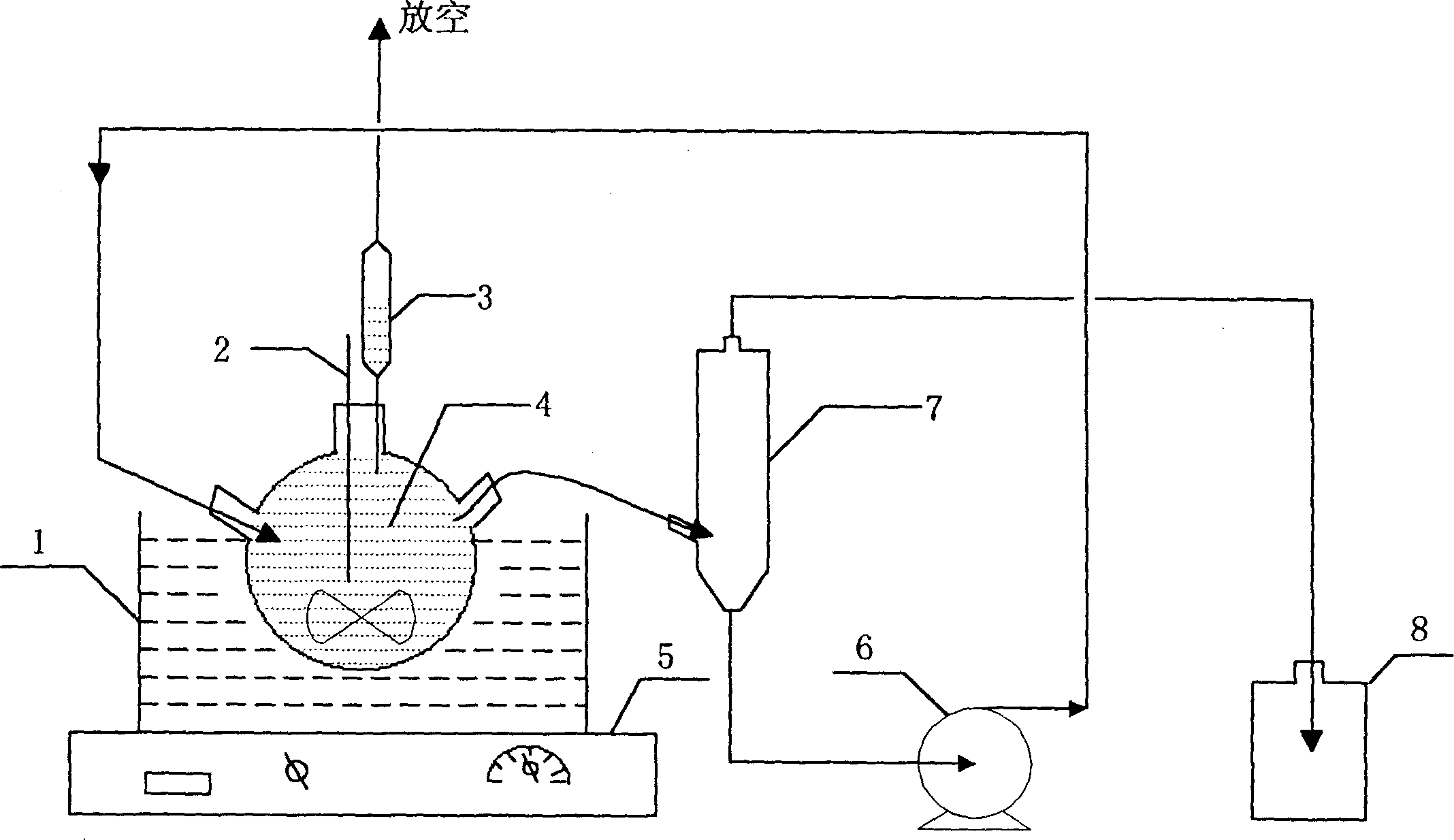Separation process of molecular sieve catalyst in ketone oxamidinating reaction system
A technology of oximation reaction and separation method, which is applied in the field of separation of molecular sieve catalysts, can solve the problems of molecular sieve loss, parking accidents, easy clogging, etc., and achieve the effect of less solid content, continuous separation and good separation effect
- Summary
- Abstract
- Description
- Claims
- Application Information
AI Technical Summary
Problems solved by technology
Method used
Image
Examples
Embodiment 1
[0018] Maintaining the ammonia concentration in the there-necked flask 4 is 1.8% by weight, the concentration of tert-butanol solvent is 40.2% by weight, the temperature of the reaction material is 80°C, the temperature of the material in the settler 7 is 65°C, the linear velocity of the material is 1.8 cm / min, and the material is settling. The residence time in vessel 7 was 12 minutes. The concentration of the titanium silicon molecular sieve measured from feed liquid collecting bottle 8 is 2ppm.
Embodiment 2
[0020] Maintaining the ammonia concentration in the there-necked flask 4 is 3.0% by weight, the ethanol solvent concentration is 40.2% by weight, the temperature of the reaction material is 80°C, the temperature of the material in the settler 7 is 75°C, and the linear velocity of the material is 3.0 cm / min. The medium residence time was 12 minutes. The concentration of the titanium silicon molecular sieve measured from feed liquid collection bottle 8 is 9ppm.
Embodiment 3
[0022] Maintaining the ammonia concentration in the there-necked flask 4 is 5.0% by weight, the concentration of isopropanol solvent is 35.2% by weight, the temperature of the reaction material is 80°C, the temperature of the material in the settler 7 is 80°C, the linear velocity of the material is 1.0 cm / min, and the material is settling The residence time in vessel 7 was 12 minutes. The concentration of the titanium silicon molecular sieve measured from feed liquid collection bottle 8 is 6ppm.
PUM
 Login to View More
Login to View More Abstract
Description
Claims
Application Information
 Login to View More
Login to View More - R&D
- Intellectual Property
- Life Sciences
- Materials
- Tech Scout
- Unparalleled Data Quality
- Higher Quality Content
- 60% Fewer Hallucinations
Browse by: Latest US Patents, China's latest patents, Technical Efficacy Thesaurus, Application Domain, Technology Topic, Popular Technical Reports.
© 2025 PatSnap. All rights reserved.Legal|Privacy policy|Modern Slavery Act Transparency Statement|Sitemap|About US| Contact US: help@patsnap.com

